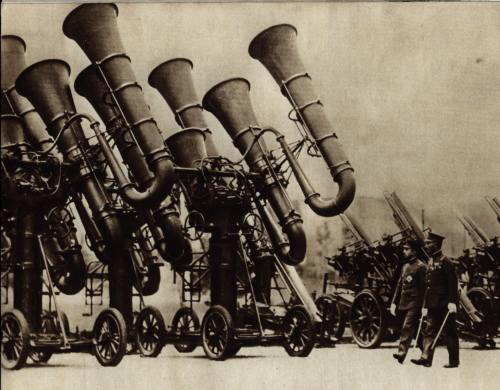
Questi impressionanti oggetti erano localizzatori acustici mobili in forza all’esercito giapponese negli anni ’30 (quello a destra nella foto è l’imperatore Hiroito).
Data la loro somiglianza allo strumento, venivano anche chiamati “tube da guerra”. Definizione impropria in quanto non emettevano alcun suono, ma si limitavano a ricevere e sperabilmente evidenziare a distanza il suono degli aerei in arrivo.
Sotto, invece, vediamo un fantastico paesaggio, con dei localizzatori fissi che danno alla scena un aspetto quasi alieno.
Credo che pochi saprebbero dire senza esitazione a che cosa servono queste costruzioni.
Sono (erano) dei localizzatori acustici, cioè delle strutture progettate prima dell’avvento del radar (fine anni ’30, primi ’40), per intercettare le onde sonore e concentrarle in un punto di ascolto, grazie anche ad un microfono.
Quelli che vedete nelle immagini si trovano in Inghilterra, nel Kent e sono stati costruiti intorno al 1930. Erano in grado di intercettare il suono di un aereo a 20/30 miglia di distanza. Muniti di un microfono, avevano una precisione di circa 1.5 gradi.

